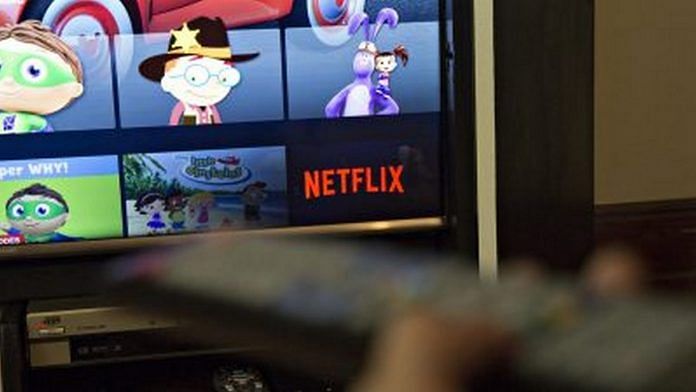New Delhi: The idea behind the government’s recent decision — to bring all digital news platforms and online video streaming platforms under the Information & Broadcasting ministry — was to establish a clear jurisdiction between the ministry and the Ministry of Electronics and Information Technology (MeitY) over content and the platforms respectively, I&B secretary Amit Khare said Wednesday.
“The idea behind the change, which was done in the month of November, was to bring content at one place, which is the Ministry of I&B, and platforms at another place, which is the Ministry of IT,” he said.
Khare was speaking at the Confederation of Indian Industry’s (CII) 9th edition of the ‘Big Picture Summit 2020’ — an annual event that brings together stakeholders from the government, industry and experts on one platform to speak over various issues and technologies concerning the media and entertainment sector.
Khare said that in the past summits, in various media circles, particularly in the print sector, there used to be a discussion that online and offline content should not be treated differently
“The same content, if it is online, it is treated in one fashion … if it is offline, it is treated by some other ministry in some other manner,” he said.
The move, he said, was to bring “some semblance” that all content should be at one place and all platforms should be at another place.
The government had, in a notification dated 9 November, brought OTT platforms such as Netflix, Amazon Prime and Hotstar and digital news media organisations under the I&B ministry.
Before that, digital media platforms were under the IT ministry jurisdiction while other media such as print, television and radio were under the I&B ministry.
However, user-generated content, such as what is streamed on YouTube or Facebook, will continue to remain under the IT ministry.
‘Tech can be used for regulation’
In a separate session, joint secretary in the I&B ministry, Vikram Sahay, said regulation for print or television media was for a limited space and numbers.
He said technology can be utilised to differentiate between the good, bad and ugly when it comes to content of digital media, which has a universal reach. Sahay added that technology can be introduced as it is agnostic to source of content and can be used to decipher digital content compliant with law, and can send alarms or signals of prohibited content.
“Why do we still have some OTT platforms that have no age gating and are showing content whose titles are unmentionable?” he asked. “If it (the industry) is able to understand and use technology to take down content that is prohibited, it would be beneficial.”
Urging the industry to work out such co-regulatory technology solutions, he said let there be blinkers, red flags or an automatic take down ( of content not in compliance with law) by use of technology.
Also read: Modi govt’s plan to regulate digital media can hobble a growing industry if not done well
‘I&B ministry a facilitator, not regulator’
Talking about the I&B ministry, Khare said the role of the government in this sector is mostly that of facilitator.
“With a budget of around Rs 4,000 crore, this ministry is the smallest in terms of budget, but largest in influence and that influence comes mostly through the private sector,” he said, giving the examples of filmmaking, private television channels and OTT platforms.
He said media and entertainment has grown as a private industry and the government must facilitate private initiatives. “It’s not regulation, but more of a facilitation,” he added.
Talking about India’s gaming industry, he said the focus is now on the Indian games because not only will they promote the industry within the country but also have an export potential.
He urged CII to project India’s soft power through media and entertainment from 2022 when India celebrates its 75th year of independence.
Also read: Online gaming or gambling? Why fantasy sports, rummy and poker are stuck in controversy
‘India to host global media and film summit next year’
Speaking at the event, I&B Minister Prakash Javadekar said that animation, visual effects, gaming and comic (AVGC) is a sunrise sector and it was time that professionals started using them more in Indian films so that the use of animation and graphics in Indian films grows manifold.
He also announced that India will host a Global Media and Film Summit next year.
Prasar Bharati CEO Shashi Shekhar Vempati spoke about the various initiatives of the public service broadcaster during the pandemic, including Doordarshan’s initiatives in the education of children during this period.
He also spoke about the need for increased collaboration between the private and public broadcasters for innovations in the sector.
Also read: 2021’s must-see drama — Streaming wars starring Netflix, Disney+, HBO Max among others



